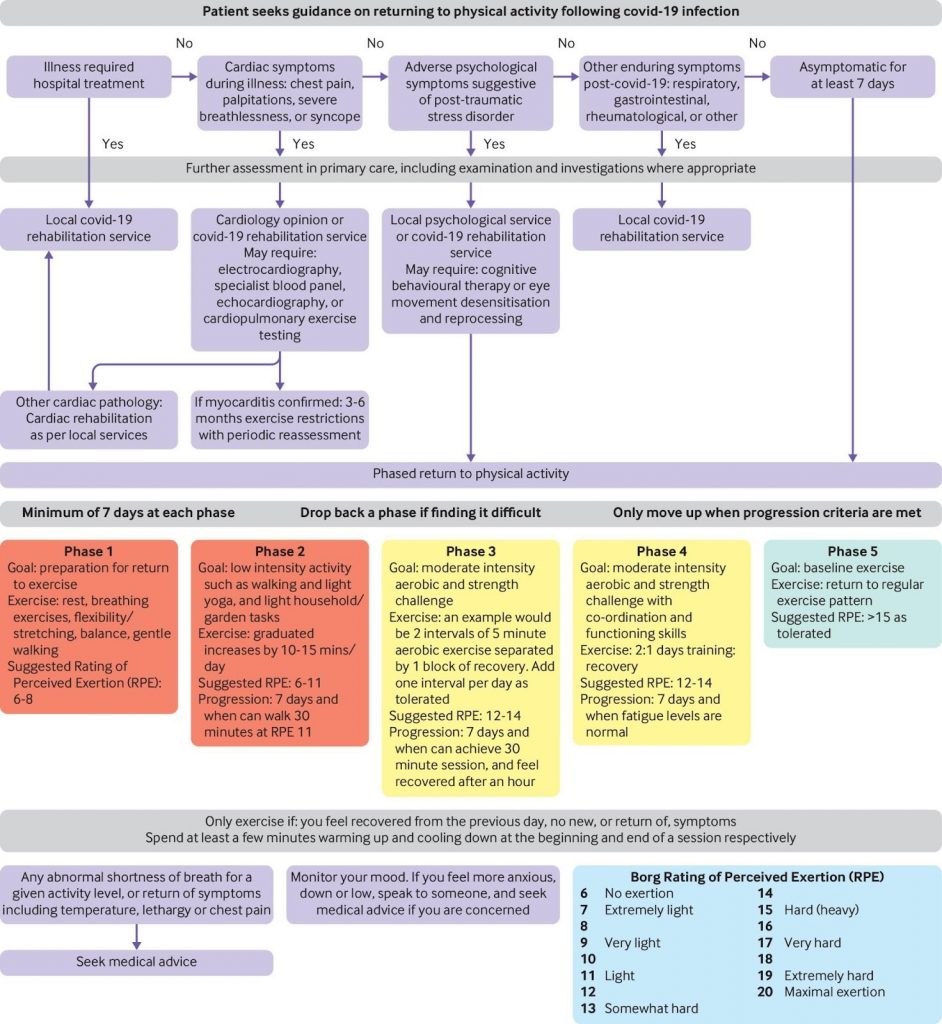How to Safely Return to Exercise post COVID 19
One of the most challenging things people are finding when they are recovering from COVID-19 is managing fatigue. Fatigue, like breathlessness and lack of mental focus make up some of the symptoms post COVID that last mid to long term post infection. These symptoms can come and go over time and can impact our ability to complete activities of daily living, limit social interactions and limit the return to healthy lifestyle habits like exercise.
Most of us are aware that physical activity is important to maintain a healthy lifestyle and should be part of our daily routine. But how should we tackle this safely after being infected with COVID 19?
But How Do I start??
If you were hospitilised due to COVID-19 symptoms OR had symptoms of myocardial injury such as chest pain, severe breathlessness, palpitations or syncope, you should be assessed by your doctor or medical specialist first.
If you had mild symptoms of COVID-19 it is advised to rest and recover for 10days from when symptoms started. When you have been symptom-free for 7 days and you are no longer requiring medications such as paracetamol, you may start your journey back into exercise.
Here is your 4 phase guide. Aim to spend 1-2 weeks in phases 1 and 2, then a minimum of 1 week per phase for 3,4 and 5.
**Please remember, STOP EXERCISING IMMEDIATELY AND CONTACT YOUR HEALTHCARE PROVIDER IF YOU experience chest pain or palpitations, unexpected breathlessness or signs of blood clots such as red,swollen calves.
Phase 1: Extremely light intensity activity. Start gently back into body movements such as flexibility and breathing exercises, balance exercises and gentle walking. You should be able to hold a full conversation throughout the exercise.
Phase 2: Minimal to light exertion. Start increasing your movements but keep the intensity to a level you can still hold a conversation throughout. Activities might include household and light garden tasks, gentle walking, balance or yoga exercises, stretching and light strengthening activities. Once you can perform all your activities of normal daily living easily AND walk 500m on the flat without feeling fatigued or breathless, it’s time to progress to phase 3.
Phase 3: Moderate intensity aerobic and strength exercise. Start increasing the intensity of exercise from a gentle walk to brisk walking, cycling, jogging or swimming. It’s a great idea to start with 2x 5minute blocks of exercise and build these up. Try exercising at this intensity every 2nd day allowing recovery in between. When you can tolerate 30min of moderate exercise in a session progress to phase 4.
Phase 4: Moderate intensity aerobic and strength exercise. 30min sessions of building intensity. Allow for a rest day every 2 days where you should stretch, or roll and release tight muscles. Progress to phase 5 when fatigue levels are as pre-COVID levels.
Phase 5: Return of pre-COVID level of exercise. Hard to Very hard intensity exercise as you are able. Be sure to manage training load with moderate and low intensity exercise days as well as rest days in your training program to manage risk of overuse/overtraining injuries.
Citing article : Returning to Physical Activity after COVID-19. BMJ 2021;372:m4721

